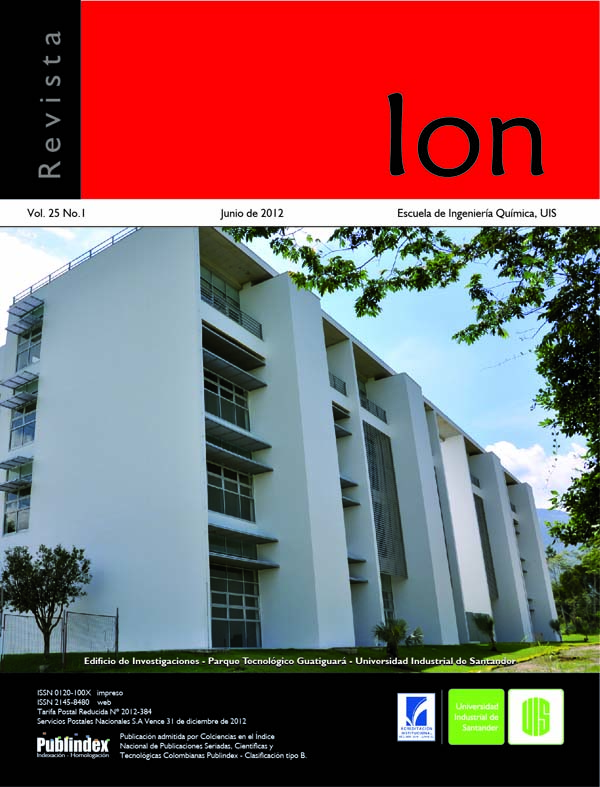Publicado 2012-09-06
Cómo citar
Resumen
Abstract
The aim of this study was to evaluate the methanogenic stage of anaerobic digestion to fruit and vegetable municipal wastes (FVMW), by mean of specific design reactors. The evaluation was carried out testing two systems with different configurations. System I was designed by two suspended–bed reactors, one for hydrolytic stage (R1) and other for methanogenic stage (R3). System II was formed by a suspended–bed reactor (R2) for hydrolytic stage and fixed-bed reactor (R4) for methanogenic stage. System I showed instability pH and low methane average production (0.23 ±0.03 LCH 4 /L/day) in reactor R3, whereas system II showed stable pH, better consumption of volatile fatty acids (VFA) and methane average production of 0.58 ±0.05 LCH 4 /L/day in reactor R4. Bacterial attachment to the ceramic support surface in the fixed-bed reactor leads to formation a biofilm in system II, and that increases the methane production. For these reasons the system II is the most advisable configuration for the anaerobic digestion to FVMW.
Keywords: fruit and vegetable wastes; anaerobic digestion; bioreactors performance, methanogenic stage,
Hydrolytic stage.
Estudio comparativo de la etapa metanogénica de la digestión anaerobia para el tratamiento de la fracción orgánica de los residuos municipales de frutas y verduras
Resumen
En este estudio se evaluó un sistema en continuo de digestión anaerobia para los residuos municipales compuestos por frutas y verduras. La evaluación se llevó a cabo en dos configuraciones de reactores. El sistema I fue diseñado por dos reactores de lecho suspendido (CSTR) para la etapa hidrolítica y para la etapa metanogénica. El sistema II fue conformado por un reactor de lecho suspendido para la etapa hidrolítica y un reactor de lecho empacado para la etapa metanogénica. El sistema I mostro inestabilidad en el pH y baja producción de metano (0,23 ±0,03 lCH 4 /l/día) en el reactor R3, mientras que el sistema II mantuvo un mejor comportamiento del pH, mejor consumo de Ácidos Grasos Volátiles AGV y una producción promedio de metano de 0,58 ±0,05 lCH4 /l/día en el reactor R4. La fijación bacteriana a la superficie del soporte cerámico en el reactor de lecho fijo conduce a la formación de una biopelícula en el sistema II, lo cual incrementa la producción de metano. Por estas razones, el sistema de II es la configuración más conveniente para la digestión anaerobia de FVMW.
Palabras clave: residuos de frutas y verduras, digestión anaerobia, funcionamiento de bioreactores, metanogénesis,
hidrólisis.

